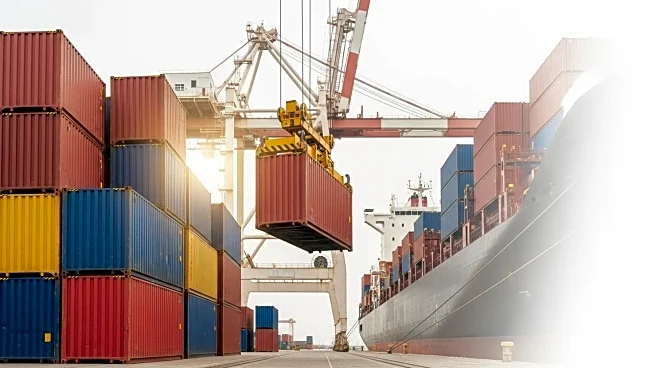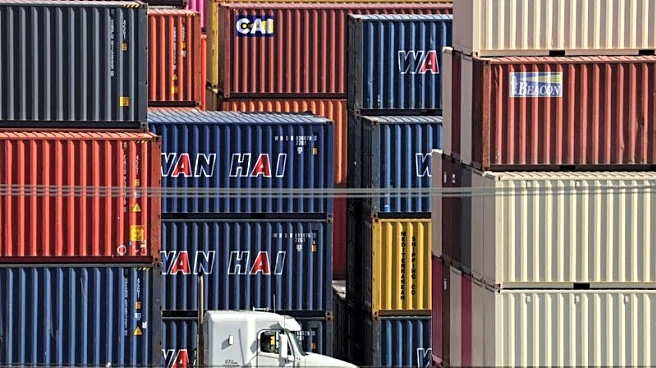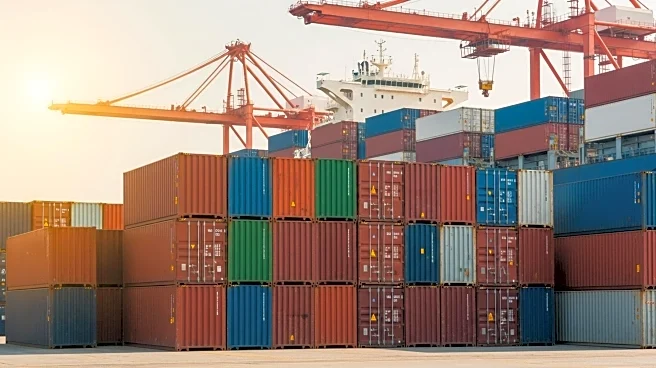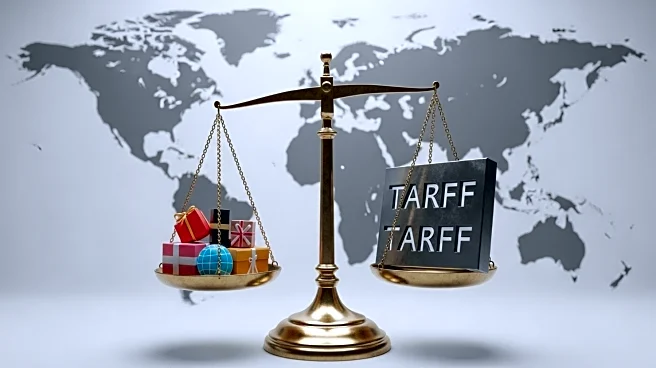What is the story about?
What's Happening?
According to the Global Port Tracker report by the National Retail Federation and Hackett Associates, U.S.-bound container imports are projected to decline through the end of the year and into 2026. This trend follows a near-record peak in imports over the summer, driven by increasing tariffs on goods from key trading partners. The report highlights that while tariffs remain in place, a federal appeals court has ruled the White House's use of the International Emergency Economic Protection Act as illegal. Despite this, tariffs on China and India are set to increase, affecting import volumes.
Why It's Important?
The decline in U.S.-bound container imports reflects the broader impact of ongoing trade tensions and tariff policies. These measures are expected to increase costs for retailers and consumers, potentially leading to higher prices for goods. The uncertainty surrounding U.S. trade policy complicates long-term planning for businesses, affecting supply chains and economic stability. The report's findings suggest that the tariffs are being used as a tool for broader national policies, impacting bilateral trade relations and the financial forecasts of shipping lines, which may face losses due to reduced global trade.
What's Next?
As tariffs continue to influence import volumes, businesses may need to adjust their supply chain strategies to mitigate costs. The ongoing legal challenges to tariff policies could lead to changes in their implementation, affecting future trade dynamics. Retailers and consumers will likely face continued uncertainty, with potential price increases as a result of these trade policies. The situation calls for close monitoring of trade negotiations and legal developments that could alter the current trajectory of U.S. import volumes.
AI Generated Content
Do you find this article useful?















